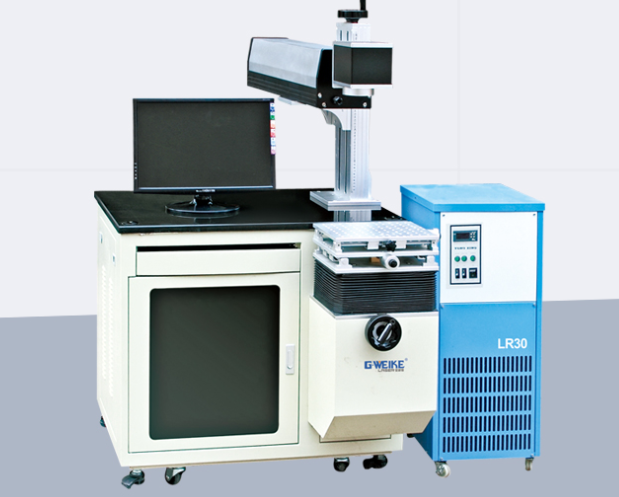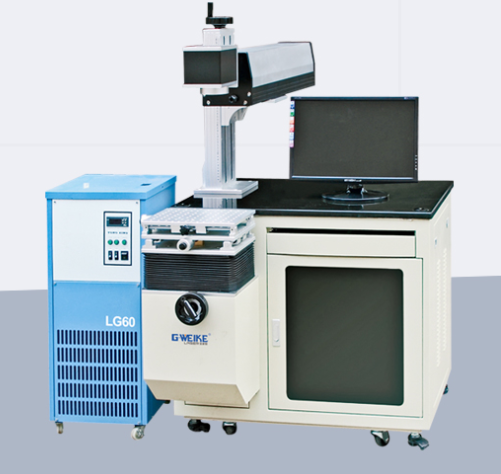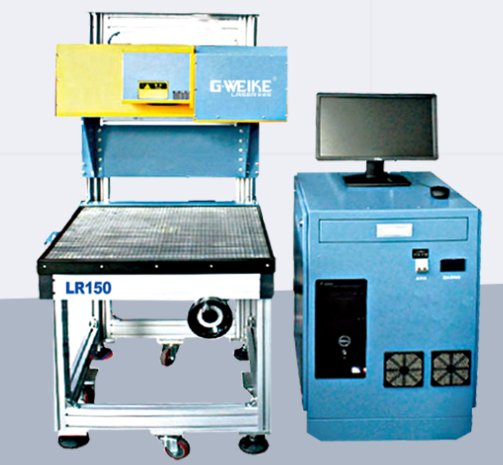CO2 Laser Marking Machine on Wood: Complete Guide
CO2 laser marking machines and diode laser cutters are great engraving tools that make it easy to create different crafts. For many woodworking or wood engraving industries, having a CO2 laser marking machine can be a huge productivity boost.
I am an avid wood design enthusiast who likes filling my home with all kinds of woodwork.
At first, I used the usual tools for cutting and engraving wood, such as chisels and axes. Then as my carving ideas grew, hand tools such as chisels were no longer sufficient for my production needs. This was followed by my first desktop laser maker - the gweike cloud basic, a 50W CO2 laser cutter with a small filter cabinet, which is no longer in production.
Later, I started to look at larger CO2 laser marking machines.
Best CO2 laser marking machine on wood
LR30

It seems slightly bulky and requires you to find a special piece to place it on. But it is the smartest and most suitable machine I have used for laser engraving wood. It uses a high-speed scanning oscillator to support high-precision pattern marking. It also has an extended focus system to give clearer details of the marked patterns.
This CO2 laser marking machine has an anti-jamming control system and a lifting table for smoother marking marks. The machine's design system uses G.Weike's patented software for easier operation.
| Laser Power | 30W 50W 100W (Optionl) |
|---|---|
| Laser Wave-Length (um) | 10.64 |
| Laser Repetition Frequency | ≤50kHz |
| Standard Marking Area (mm) | 200*200mm 300*300mm |
| marking Depth (mm) | ≤2mm |
| Marking Speed (mm) | ≤7000mm/s |
| Min.Line Width (mm) | 0.1mm |
| Min. Character Size (mm) | 0.4mm |
| Repetition Accuracy (mm) | ±0.01 |
| Power Consumed (kW) | <1200W |
| Electrical Voltage | 220V±10% AC, 50Hz |
| Cooling System | Water cooling |
| Controlling System | Win XP+EZCAD marker system |
| Operating Temperature | 0℃-30℃ |
LG60

The LG60 CO2 laser marking machine has the biggest advantage over the LR30 because it supports a higher laser power - 60W, 80W, 100W 130W. Other features are similar to those of the LR30, so if you need to mark deeper patterns regularly, choose the LG60.
LR150

The LR150 CO2 laser marking machine is a high-power laser marking machine. The machine features a 150W metal-sealed laser with integrated cooling, ensuring continuous operation. Its marking speed of over 150m/min, combined with the patented marking software, greatly increases your productivity.
This simple and compact machine greatly reduces maintenance costs.
| Working Area | 300*300mm 600*600mm |
|---|---|
| Laser Source | Rofin( Germany) |
| Laser Power | 150W |
| Galvanometer | CTI( USA) |
| Mirror | II VI (USA) |
| Laser Power Supply | Mean Will |
| Positioning System | Red-light positioning |
| The Maximum Power Consumption | 4500W |
| Cooling System | Constant temperature cooling unit |
| Pulse Frequency | 0-130KHZ |
| Laser Wavelength | 10640nm |
| Graphic Format Supported | PLT, DXF, DWG, BMP, JPG |
| Main Body Size | 610* 600* 825mm |
| Control Cabinet Size | 650* 830* 1480mm |
Different between laser marking VS laser engraving?
Laser marking
Laser marking uses low power to mark the material's surface, which does not generally damage the material's surface but causes oxidation by heating the material.
The CO2 laser marking machine is mainly used for marking materials by carbon migration, the most important feature of which is that the material's surface remains intact. A fiber laser marking machine is mainly used for marking metal materials by annealing.
Laser engraving
Laser engraving is an extension of laser marking, which achieves instantaneous sublimation of the surface of the wood, mainly through the action of a high-power laser beam on the material's surface. The laser engraving process destroys the material's surface to create color contrasts and often can preserve these engravings permanently.
CO2 laser marking machine for wood types
A CO2 laser marking machine can mark and engrave a wide range of wood types, including hardwoods like oak, maple, and cherry, softwoods like pine and cedar, and even engineered wood products like plywood and MDF. The laser marking process can create high-quality engravings on the surface of the wood, and it can be used to mark designs, logos, text, or any other graphic or pattern. With the precision of a CO2 laser marking machine, you can create intricate designs and detailed markings to enhance the appearance and value of your wood products. The following are some of the types of wood that are suitable for carving.
- Basswood
This type of softwood is an extremely suitable type of wood for laser marking. The smooth, light-colored surface of basswood makes it easy to leave contrasting marks on the surface with laser marking. - Walnut
Walnut is a relatively hard wood and has a dark color, so it is difficult to leave visible marks on walnut. - Mahogany
Mahogany is a lighter color, like basswood, but mahogany is relatively harder. You can increase the marking power to reduce the speed to complete the marking as appropriate. - Bamboo
Bamboo is wood with a special texture and can be easily marked with a CO2 laser marking machine. Many bamboo chopsticks and chopping boards are laser marked with the company's logo. - Maple
Maple is also one of the most complex types of wood and is ideal for laser engraving, but laser marking may have a poor contrast effect. - Cherry wood
Cherry is a slightly reddish wood. Cherry blossoms are very hard and are one of the more difficult types of wood to engrave. Again, you will need to increase the power to reduce the speed to complete the marking. - Plywood
There are many types of plywood, and the specific marking results are directly related to the type of wood. You can use your marking results to determine if the material is suitable.
How to use CO2 laser marking machine
Using a CO2 laser marking machine is also very easy if you have experience operating laser equipment. Here are the general steps for operating the marking machine.
- The first thing we need to do is to take care of our safety and wear safety glasses.
- The next step is to connect the power supply and keep the marking environment ventilated. Then set the parameters according to the hardness of the material to be marked.
- Use the software provided with the machine or purchase additional laser design software separately to complete the pattern you want to mark.
- Adjust the machine parameters such as power, speed, etc. The harder the wood, the higher the power chosen for marking and the slower the speed.
- Test the marking on a sample piece until the desired mark is achieved.
- Once the above steps have been completed, the marking material is placed on the workbench, checked for focus, and the marking begins.
- When the marking is complete, the onion is removed from the machine, and the marking quality is checked.
- Follow the CO2 laser marking machine user manual for proper maintenance of the machine.

